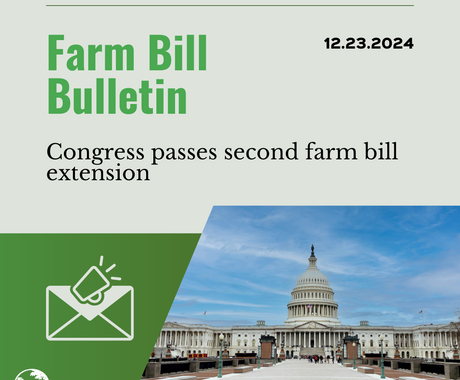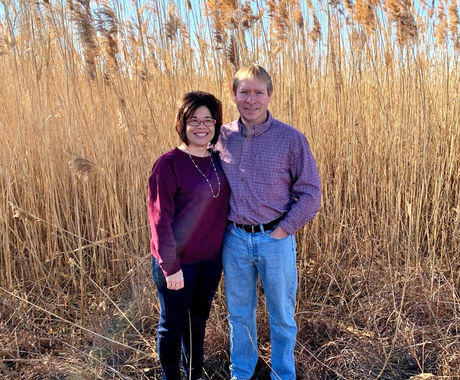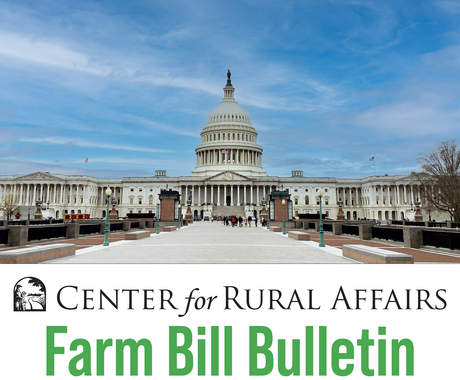The 2024 Minnesota legislative session has been a busy one. Since lawmakers convened in February, they have introduced bills that address permitting reform for clean energy projects, the use of software to speed up the approval process for residential solar systems, and allowing the co-location of transmission lines on rights-of-way.
Last year, Minnesota legislators passed a $72 billion budget to fund the state government and its programs for two years. Some significant policies made it over the finish line, including an ambitious clean electricity bill committing all utilities to provide their Minnesota customers with 100% carbon-free electricity by 2040. The legislation, which requires reporting on benchmarks every five years, has been monumental in pushing Minnesota to get serious about its energy transition.
This year, leaders say they're focused on passing a $982 million bonding package to fund infrastructure projects, such as the recommended $1.5 million in renewable energy investments for state facilities. This is also an election year in which Minnesota House seats are on the ballot.
Let us know if you have any insight or feedback for your legislators. Please reach out to me at [email protected] or 507.513.8545.
Of the bills introduced, we are closely monitoring the following because of their potential rural impact:
Energy
House File (HF) 4700/Senate File (SF) 4784: This legislation creates the Minnesota Energy Infrastructure Permitting Act, which will establish clear and consistent timelines for each stage of the permitting process, remove delays and duplications, and require state agencies to work together to identify and solve problems early in the process.
For Minnesota to achieve its ambitious 100% carbon-free electricity goal by 2040, the state needs to accelerate the development of solar, wind, and other projects to help deliver clean energy in greater amounts. The Minnesota Energy Infrastructure Permitting Act is an important step to modernize the permitting process and remove barriers to ensure projects can deliver on a clean energy future.
Status: SF4784 passed in the Senate and advanced to the House.
HF 5171: This bill intends to speed up the process of installing solar panels on houses with the help of SolarAPP+, an automated permit processing software developed by the U.S. Department of Energy’s National Renewable Energy Lab. This bill would establish a program through the Minnesota Commerce Department to provide incentives between $5,000 and $20,000 to local permitting authorities willing to use SolarAPP+.
Without time-consuming manual permit reviews, SolarAPP+ helps local governments save time, resources, and taxpayer dollars. Contractors can install solar projects faster and more efficiently, consumers can start saving money on their energy bills sooner, and communities benefit from reduced fossil fuel emissions and greater economic development opportunities as more clean energy is deployed.
Status: Placed into House Climate and Energy omnibus bill, HF 4177.
HF 3457: This bill establishes a 60-day limit for state agencies to issue the permits needed for the construction of a large electric power plant or high-voltage transmission line following the Public Utilities Commission issuance of a site or route permit for the facility. Exemptions may be granted if there is a conflict with federal law, an incomplete application, or an agreement by the permit applicant to extend the deadline.
Similar to other lengthy processes, this would create more urgency and remove barriers for permitting electric power facilities and high-voltage transmission lines.
Status: Placed into House Climate and Energy omnibus bill, HF 4177.
HF 3900/SF 3949: This legislation allows the co-location of high-voltage transmission lines across or along any trunk highway, aided state trunk highway, controlled access highway, interstate highway, or roadway. Additionally, if the relocation of a utility facility is needed due to the construction of a project on a federally aided state trunk highway, the state shall pay the cost of relocation with trunk highway funds.
Minnesota needs significantly more transmission to support existing and proposed energy projects. This bill would encourage the siting of transmission lines on existing rights-of-way, which would reduce conflicts with private landowners.
Status: Placed into House Housing, Labor and Transportation omnibus bill, HF 5242, and passed.
HF 3704: This bill requires transmission owners who currently submit project reports and own more than 500 miles of transmission lines in Minnesota to study congestion and identify the frequency in certain areas. Transmission owners are further required to analyze grid enhancing technology that could alleviate the congestion and propose an installation plan for each congestion point.
If the state expects to meet its 2040 carbon-free goal, officials must find a way to alleviate congestion on transmission lines. Congestion occurs when the energy generation in an area is greater than what the local transmission network can carry. When transmission networks are congested, the excess power cannot enter the grid and instead faces curtailment, which is any action that reduces the amount of electricity generated to maintain the balance between supply and demand. Curtailment can cause financial impacts in counties that house transmission lines.
During the 2021 production year, Murray County saw the financial impact from curtailment when they experienced a 34% drop in wind energy production tax revenue compared to the 2020 production year. Curtailment left rural communities in Murray County without vital wind tax revenue.
Status: Placed into House Climate and Energy omnibus bill, HF 4177.
Broadband
HF 3859/SF 3592: This bill would allow for more rapid expansion of broadband services by increasing the cap on the Low-Density Pilot Grant Program from 75% percent of the total cost of a project to 90%.
As part of Minnesota’s Border-to-Border Broadband Development Grant Program, projects located in unserved or underserved areas of the state are eligible to apply for funding from the Low-Density Pilot Grant Program to expand broadband access. With some stipulations, eligible applicants include incorporated businesses or partnerships, political subdivisions, Tribes, nonprofit organizations, cooperative associations, or limited liability corporations.
Status: Referred to House Agriculture Finance and Policy and Senate Agriculture, Broadband, and Rural Development committees.





